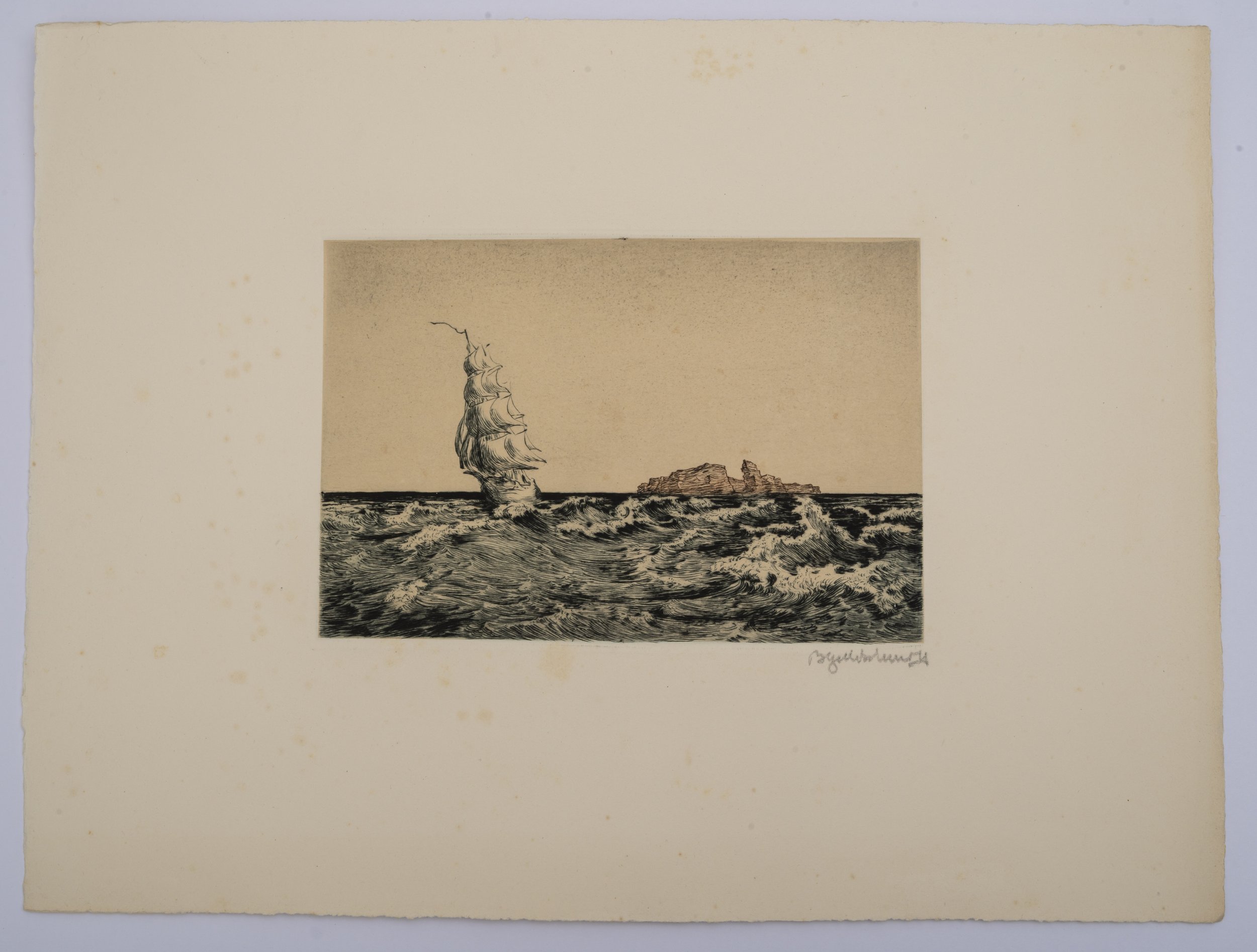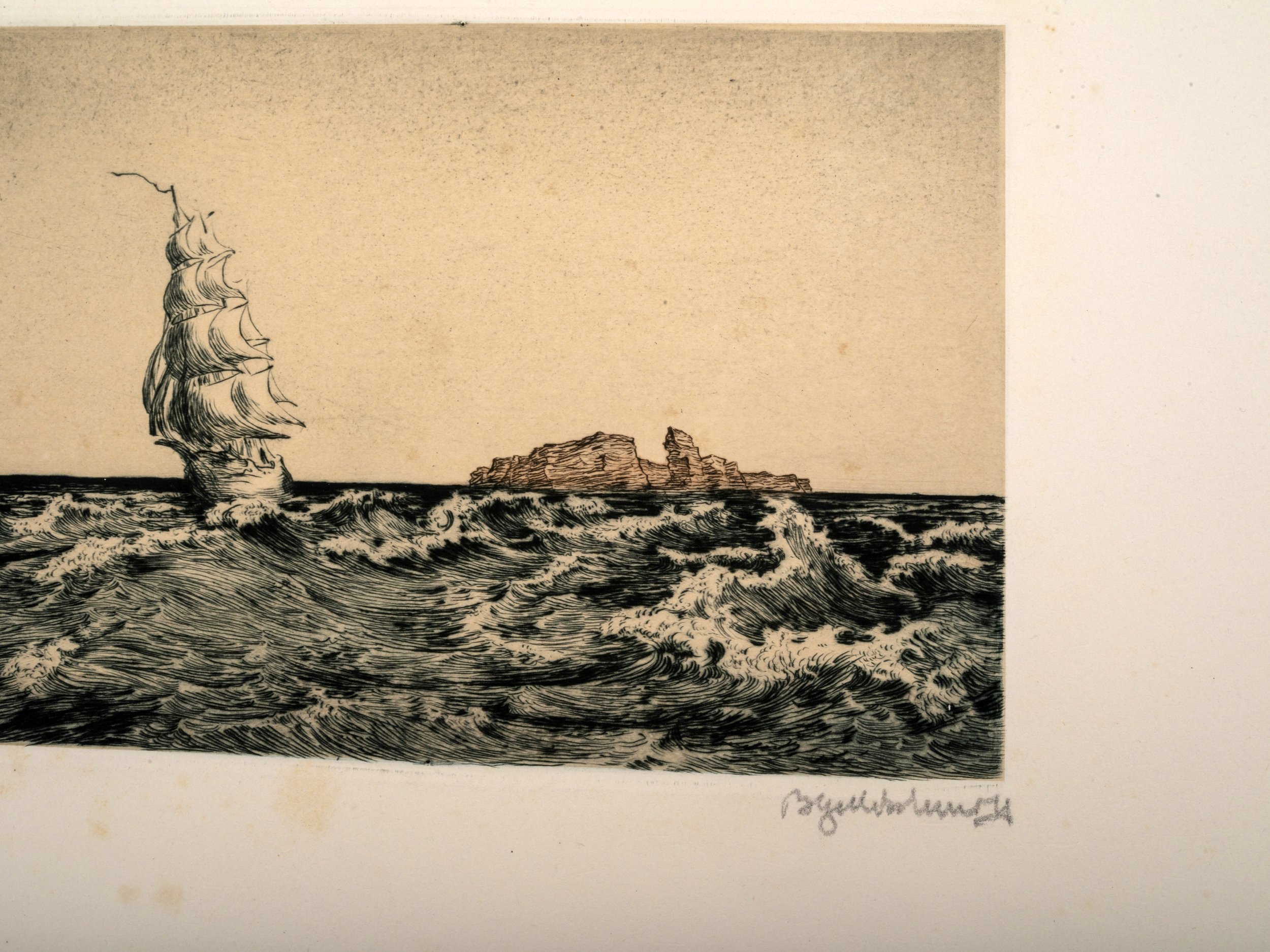Bruno Goldschmitt (1881-1964), Sailing Ship, 1923
Color etching, signed in pencil lower right. A sailing ship in choppy waters. An unnumbered signed artist proof from Deutsches Land (Radierungen. 1923. Edition of 40 in color, 70 in monochrome.) 5 3/4" x 8 1/2" image size, on 12 1/2” x 16 3/4” sheet.
Descended from the estate of a mid 20th century European art dealer.
Shipping included within the US.
Bruno Goldschmitt (1881-1964) was a student of Franz von Stuck at the Academy of Fine Arts, Munich. In 1900, he founded an artists' colony on the lower shore of Lake Constance together with Hermann Hesse, Ludwig Finckh, and others. In addition to an extensive woodcut oeuvre, he created frescoes and applied arts works. In 1923, he turned to etching (cf. Rodenberg p. 337).
Color etching, signed in pencil lower right. A sailing ship in choppy waters. An unnumbered signed artist proof from Deutsches Land (Radierungen. 1923. Edition of 40 in color, 70 in monochrome.) 5 3/4" x 8 1/2" image size, on 12 1/2” x 16 3/4” sheet.
Descended from the estate of a mid 20th century European art dealer.
Shipping included within the US.
Bruno Goldschmitt (1881-1964) was a student of Franz von Stuck at the Academy of Fine Arts, Munich. In 1900, he founded an artists' colony on the lower shore of Lake Constance together with Hermann Hesse, Ludwig Finckh, and others. In addition to an extensive woodcut oeuvre, he created frescoes and applied arts works. In 1923, he turned to etching (cf. Rodenberg p. 337).
Color etching, signed in pencil lower right. A sailing ship in choppy waters. An unnumbered signed artist proof from Deutsches Land (Radierungen. 1923. Edition of 40 in color, 70 in monochrome.) 5 3/4" x 8 1/2" image size, on 12 1/2” x 16 3/4” sheet.
Descended from the estate of a mid 20th century European art dealer.
Shipping included within the US.
Bruno Goldschmitt (1881-1964) was a student of Franz von Stuck at the Academy of Fine Arts, Munich. In 1900, he founded an artists' colony on the lower shore of Lake Constance together with Hermann Hesse, Ludwig Finckh, and others. In addition to an extensive woodcut oeuvre, he created frescoes and applied arts works. In 1923, he turned to etching (cf. Rodenberg p. 337).









